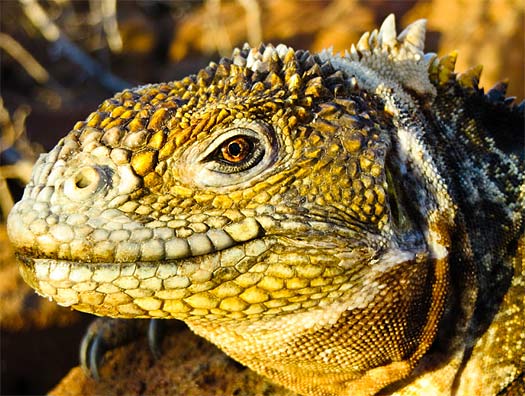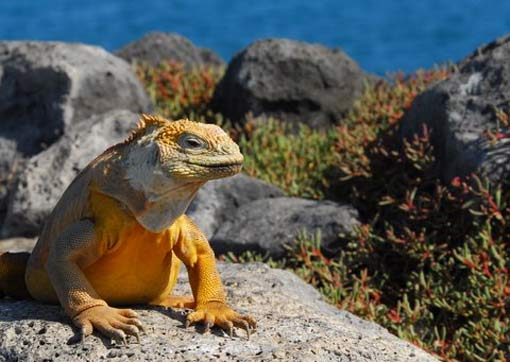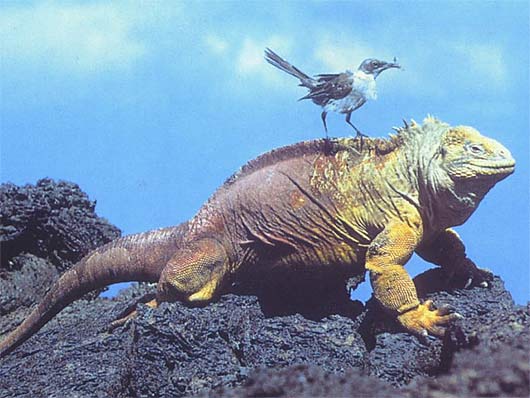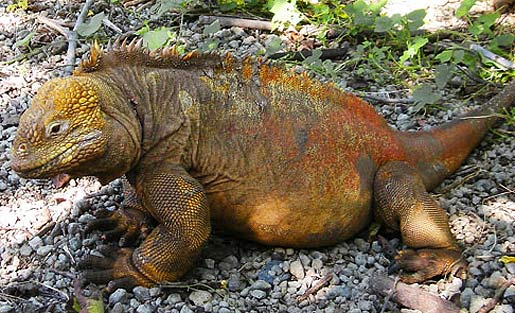Galapagos Land Iguana – Yellow Crusty Islander

And you thought the marine iguanas of the Galapagos were ugly! When Darwin first encountered these land iguanas, on his discovery voyage to the Galapagos Islands (in present day Ecuador), he noted that they were ugly and stupid-looking. But beauty is in the eye of the beholder and some think that the lizards and their coloration can be quite stunning. Back in Darwin’s time, there was a considerable population but now the 2 species of land iguanas on the Galapagos Islands have been reduced to numbers so low they are considered threatened. They no longer occupy some of the islands they once did. The main culprits causing the decline are humans, goats, feral cats, and dogs.
Like the marine iguanas, land iguanas have a dorsal crest but instead of a flat tail, they have a round one. The can grow to lengths of about 3.6 ft (1.1 m) and weigh 10 to 15 lbs (4.5 to 6.8 kg). Their head is covered in warty, rounded scales and the thick body is colored yellow or reddish brown. When they are excited the colors are more brilliant.

Adults eat almost exclusively the prickly pear fruit of cactus while the juveniles prefer to eat insects. In order to eat prickly pears (spines included) they have very tough mouths. Hanging around and waiting for good prickly pears to fall off the cactus is their main activity. They allow birds to perch on them and pick off bugs.

The next biggest activity for the iguanas is mating. Males will defend a territory that generally includes several females. Defense tactics include bobbing the head, stamping of feet and the puffing up of the lizard body should any other males approach a male’s territory. If an intruder insists the two males may have to bash heads in order to determine supremacy. If a female is willing to mate, she will strike a certain posture and the male will pick up her scent, circle up to her and bite her neck. Some females prefer to run off before this can happen. Females lay 5-15 eggs in shallow nesting burrows and stand by to watch and defend them.

